
Raw Cacao vs. Traditional Cacao: Benefits and Differences
Raw cacao, which is not subjected to the roasting process, retains higher nutritional values compared to traditional cacao.
The roasting process reaches temperatures of about 140°-150°C, which results in the loss of most of the naturally occurring nutrients in cacao, especially vitamins and minerals.
For this reason, it is always preferable to consume raw cacao over traditional cacao.
Let’s explore the main characteristics of cacao and what differentiates raw cacao from traditional cacao.
The Cacao Plant
Theobroma Cacao is the botanical name of all species of cacao plants, belonging to the Sterculiaceae family.
The plant can reach 2 meters, then the branches extend to form a canopy, reaching up to 3 meters.
When it reaches 2-3 years old, the plant begins to bear fruit. Cacao fruits continuously, but generally, there are two harvests, one before and one after the rainy season.
There are different species due to numerous mutations of the plant over the years.
The main subspecies of Theobroma Cacao are:
Criollo: More prized, the purity of the aromas is incredible. Yields are very low because the plant is very delicate and requires a lot of care.
Forastero: Of lower quality. The yield is significant, as the plant is resistant and is therefore more economically viable.
Trinitario: A hybrid between the two plants, exploiting the characteristics of both subspecies. It possesses the characteristics and aromas of Criollo and the robustness and yield of Forastero.
Cultivation
Cacao is a tropical tree, and its ideal habitat is tropical forests with constant climate and abundant rainfall distributed throughout the year.
Intense rains, high temperatures and humidity, and dense shade are essential for the development of this plant.
Cultivators often plant taller plants, such as banana trees, alongside cacao species to increase shade and create the ideal climate.
The plant develops below 1000 meters altitude on slightly acidic, moist but well-drained soils.
The cacao plant is not suited for intensive farming. Even today, cacao fruits are harvested by hand, as is their opening, using machetes.
The plant generally does not fear parasites but is sensitive to fungi and insects.
Raw Cacao vs. Traditional Cacao
The processing of raw cacao is long and complex, based on production methods that aim to preserve the precious nutritional qualities of cacao.
Processing at low temperatures allows the preservation of the fine organoleptic properties of high-quality cacao and keeps intact the precious nutrients naturally present in cacao, such as antioxidants, minerals, enzymes, and much more.
After harvesting, the beans are placed in large containers, called fermentation boxes, which are located in dark and well-ventilated rooms.
The white and gelatinous substance that covers the beans triggers the fermentation process, which can last from 5-7 days depending on the type of cacao.
During fermentation, the beans are stirred daily with special paddles. This process, which is still done manually, is called “lifting.”
Finally, the fermentation process is abruptly stopped through natural sun drying.
What differentiates raw cacao from traditional cacao is the roasting process that traditional cacao undergoes.
The roasting of the beans, which occurs at high temperatures, and the subsequent refining, called “conching,” aim to make the cacao more palatable, at the expense of nutrients.
Benefits of Raw Cacao
Raw cacao retains all the organoleptic characteristics of cacao and has numerous beneficial properties, making it a Superfood.
It contains a large number of antioxidants such as catechins, epicatechins, and polyphenols, which are believed to protect us from degenerative processes and help promote blood circulation.
The ORAC (Oxygen Radical Absorbance Capacity) is the scale developed by the United States Department of Agriculture to measure the effectiveness of antioxidants in absorbing free radicals.
The higher the ORAC score, the higher the level of antioxidants present in foods.
In the ORAC table, raw cacao powder and raw cacao nibs are at the top of the list with very high scores.
Nutritional Properties
Raw cacao, compared to traditional cacao, manages to maintain high nutritional values, such as vitamins and minerals, which are sensitive to heat. Let’s see in detail the nutrients present in raw cacao.
Magnesium: Contributes to reducing tiredness and fatigue, maintaining normal bones and teeth, and the normal functioning of the nervous system and psychological function. Thanks to the presence of magnesium, raw cacao can provide a sense of well-being, improving mood through the production of endorphins.
Phenylethylamine (PEA): A class of substances present in raw cacao, extremely sensitive to heat, and therefore not present in traditional cacao. Produced by our body when we are in love, it helps enhance concentration and memory.
Anandamide: An endorphin present in raw cacao, produced by our body after physical activity and known as “the happiness chemical.”
Tryptophan: Another component highly sensitive to heat, present only in raw cacao, an essential amino acid precursor of serotonin and melanin. Tryptophan reduces hunger and pain sensitivity, helps with depression or anxiety, and promotes sleep.
Fiber: Helps cleanse the intestines and stimulate peristalsis.
Theobromine: A substance chemically similar to caffeine, capable of increasing energy without stimulating the nervous system.
Contraindications
There are no significant contraindications to consuming raw cacao, the only one being the quantity.
Avoid for children under three years as it could cause allergic reactions.
For more information:
Soft Cacao Cake Recipe Preparation time: ~45 min
Ideal for breakfast or a tasty snack.
Ingredients:
200g all-purpose flour
60g NaturaleBio cocoa powder
180g sugar
2 eggs
100ml NaturaleBio coconut oil
200ml whole milk
1 packet of baking powder
Powdered sugar for decoration
Preparation:
Pour the eggs into a bowl, add the coconut oil and whole milk, and start mixing with a kitchen whisk.
Add the flour, sugar, cocoa, and baking powder and continue mixing.
Once a homogeneous mixture is obtained, put it in a 24 cm diameter baking pan.
Finally, bake in a static oven at 180° for 30-35 minutes (use the toothpick test to check the baking).
Sprinkle the cake with powdered sugar and serve!


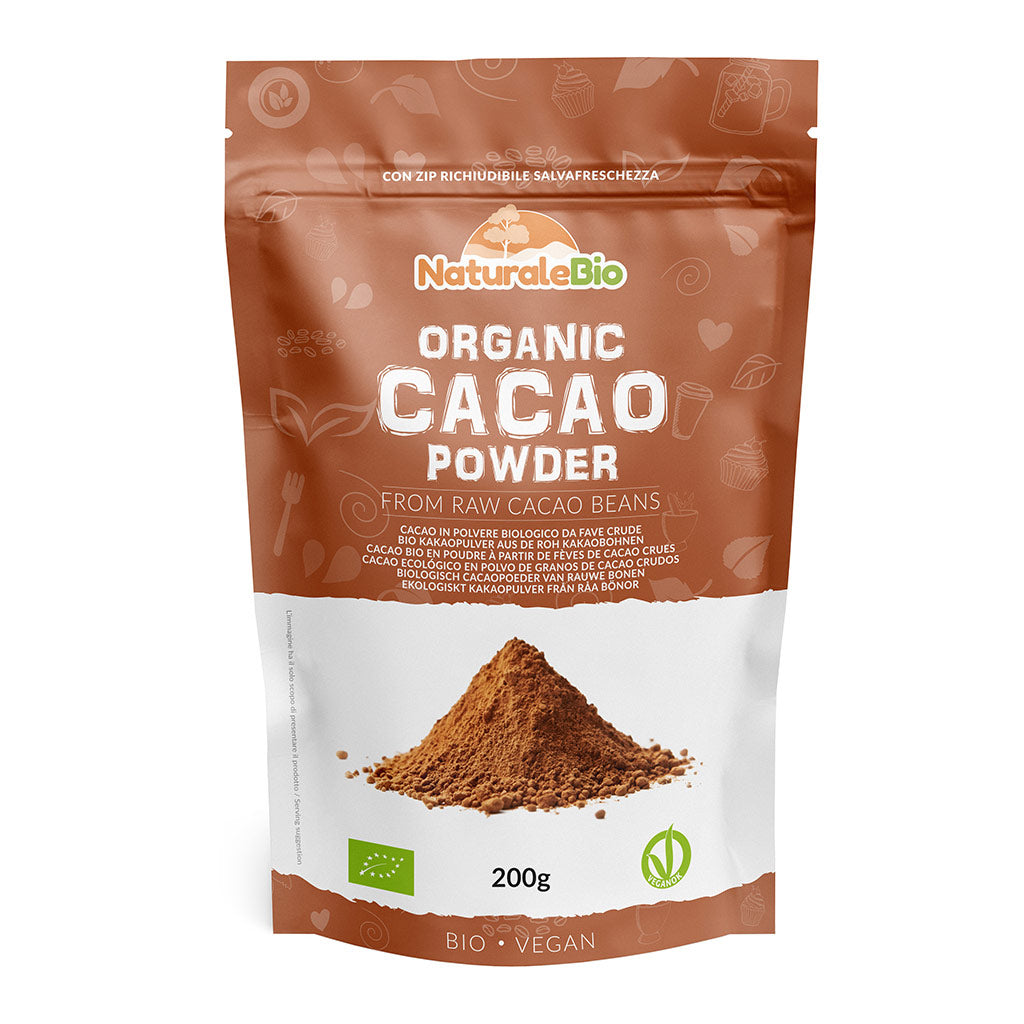
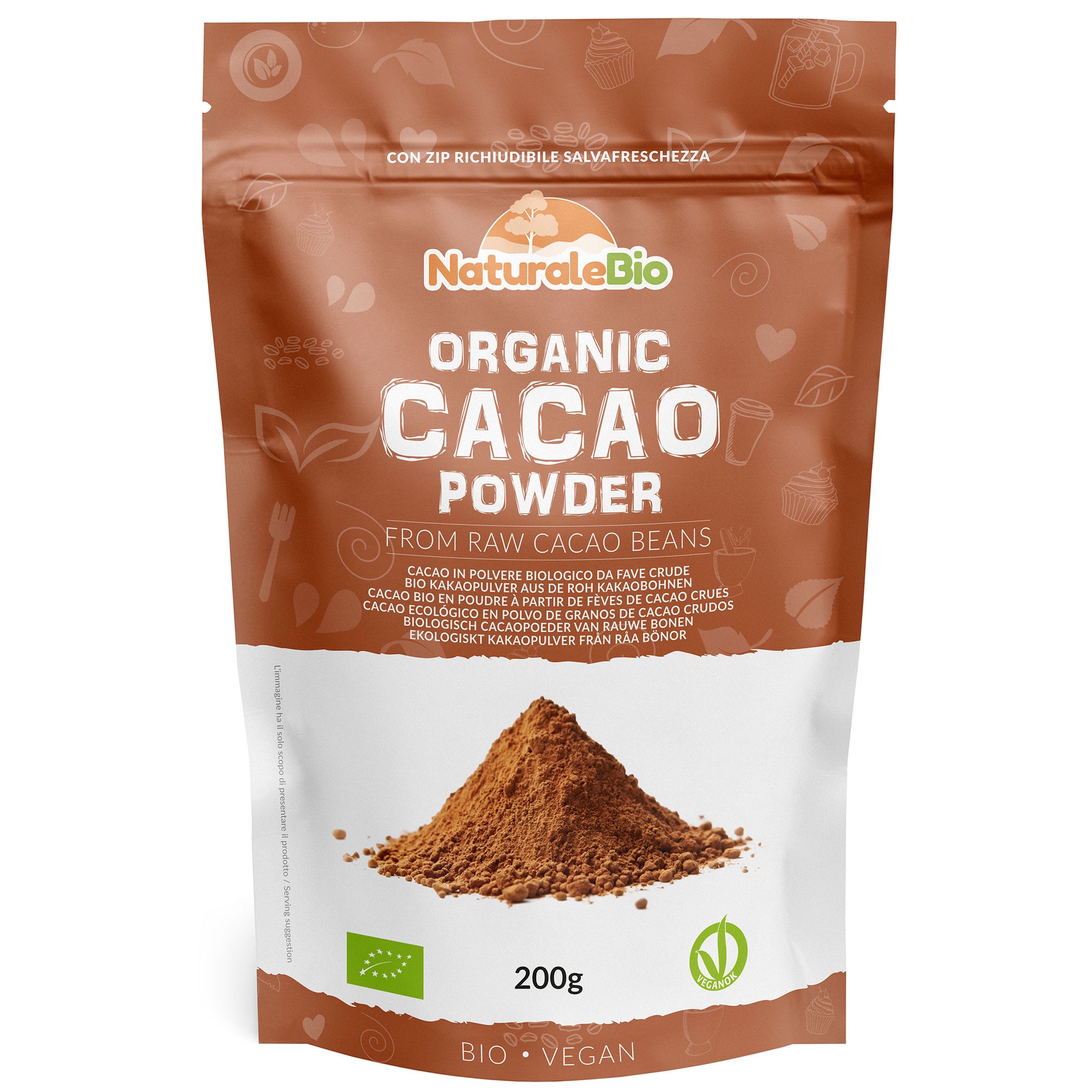
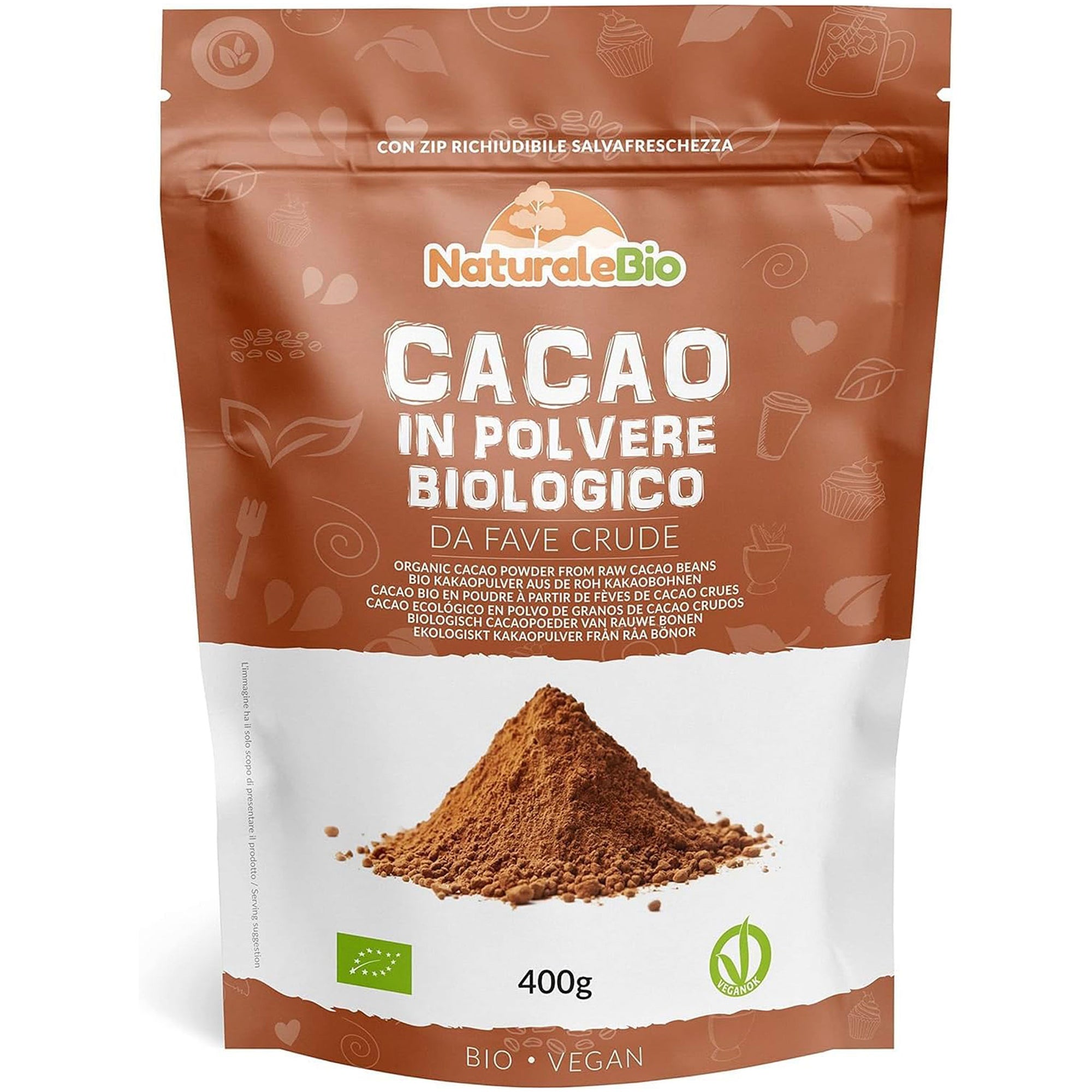
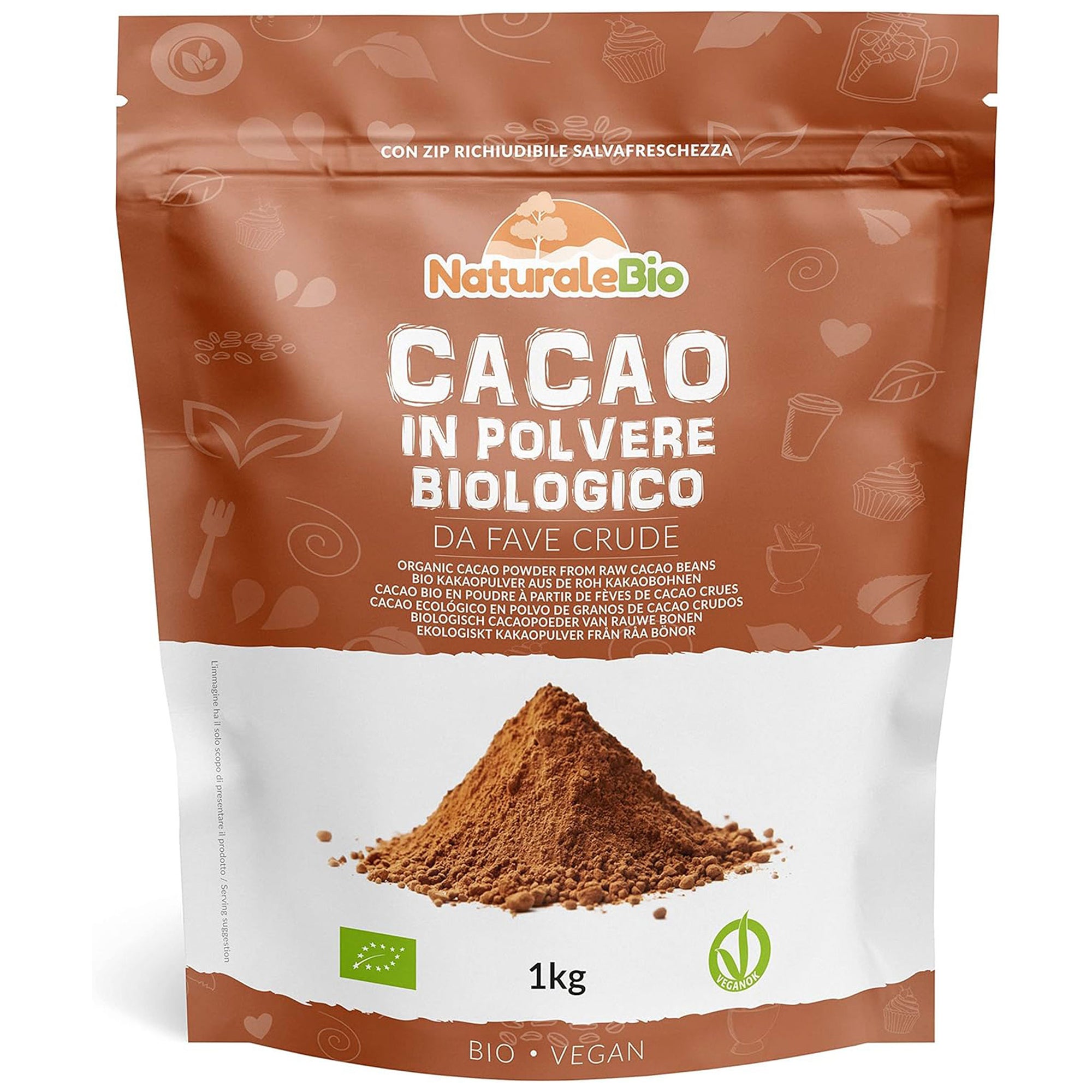
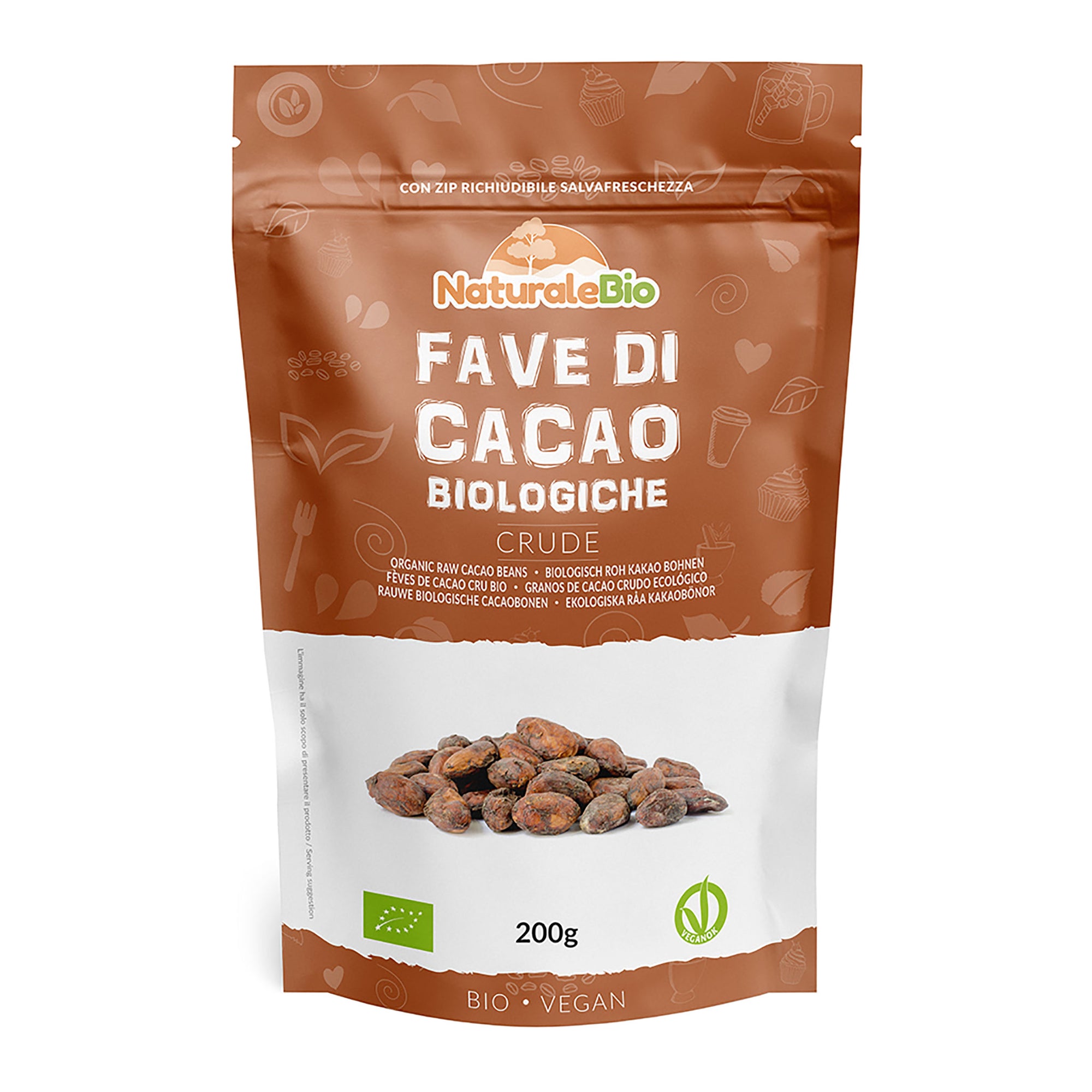
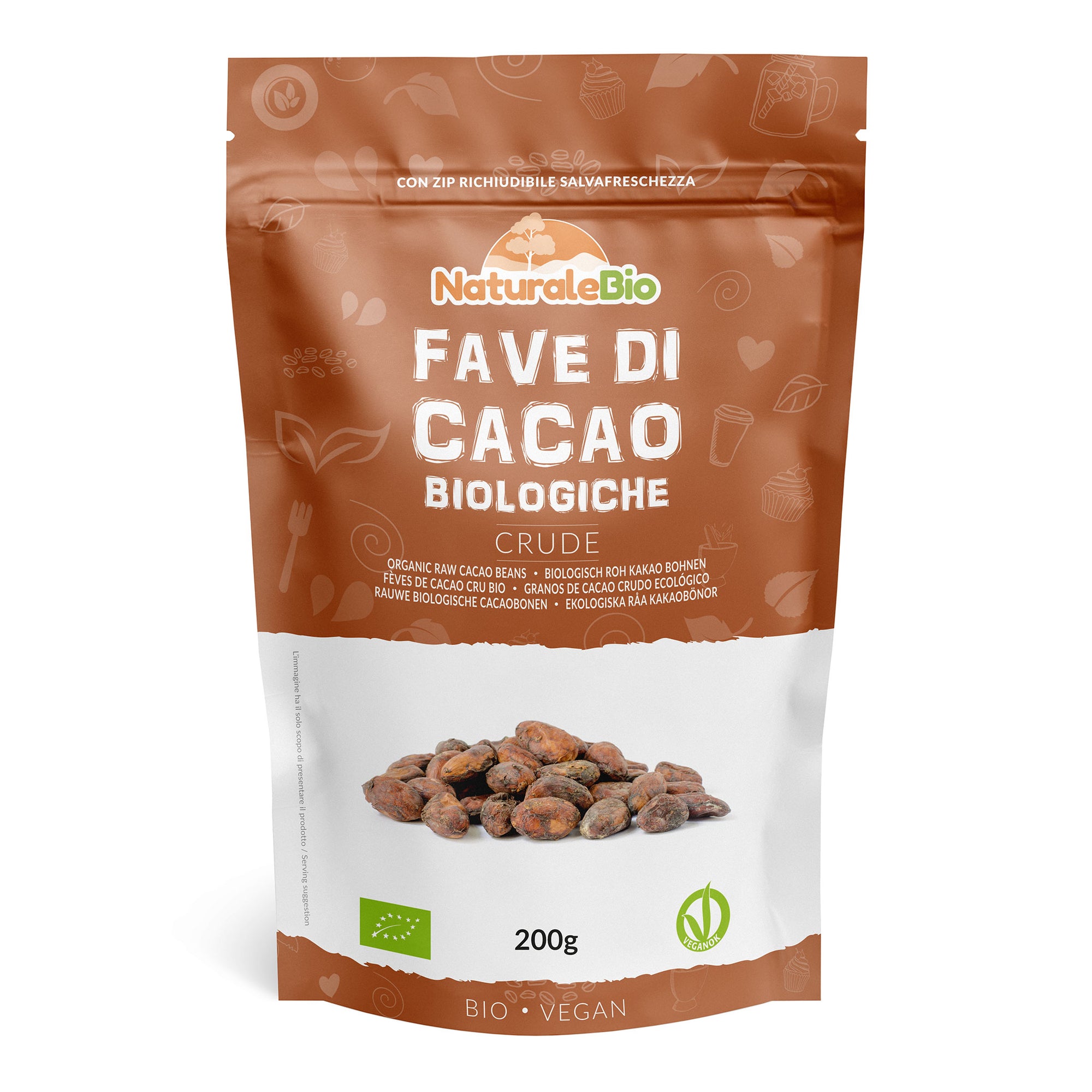
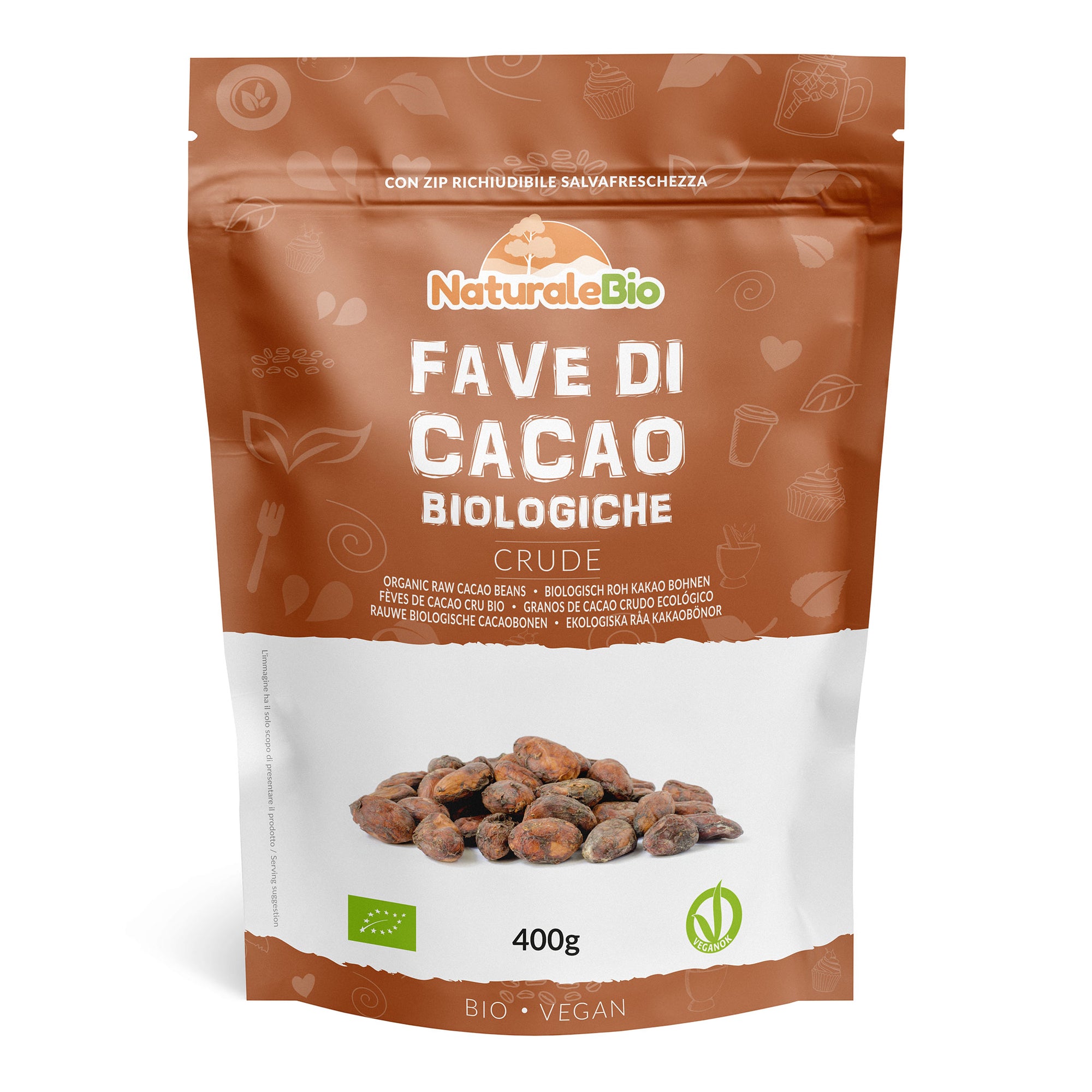
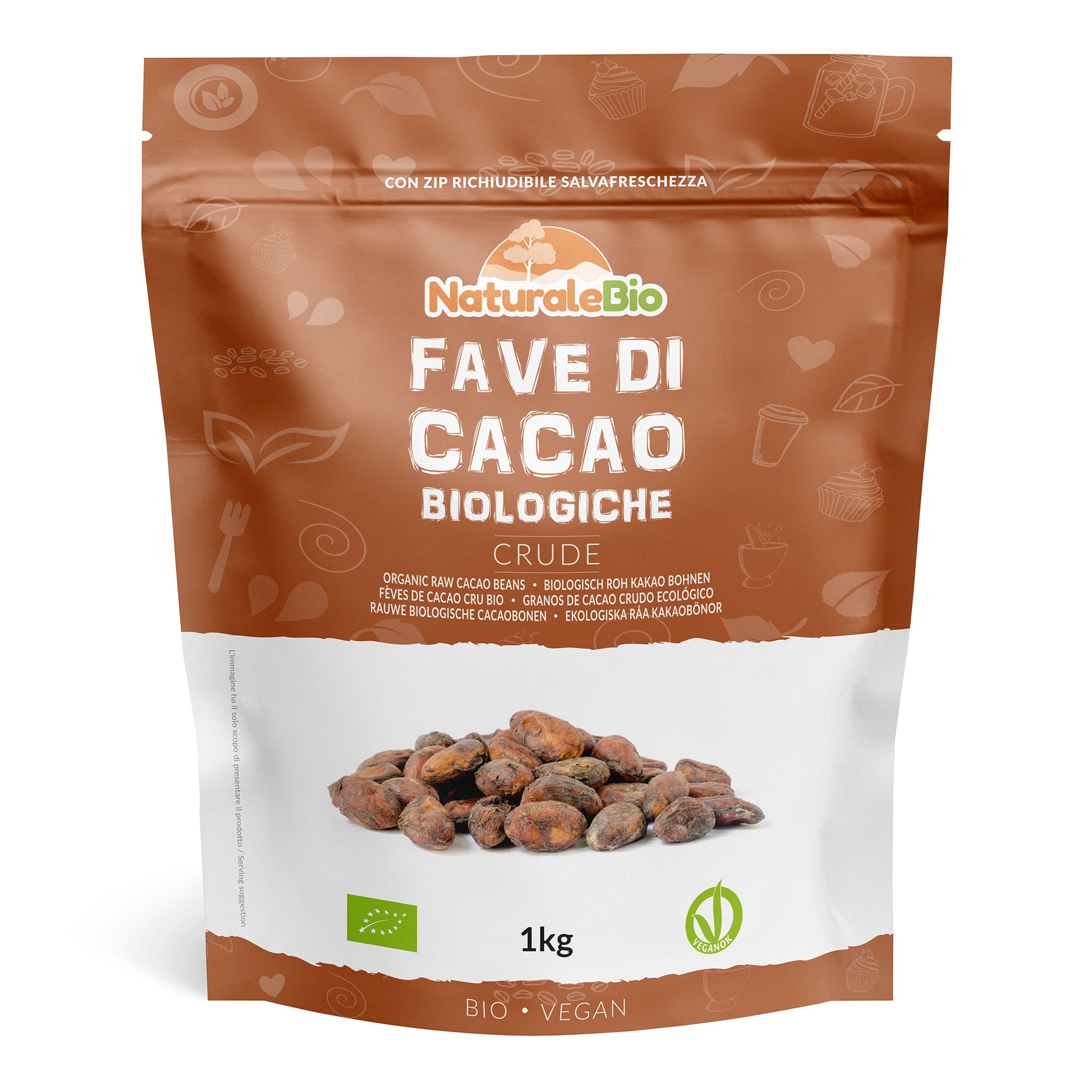
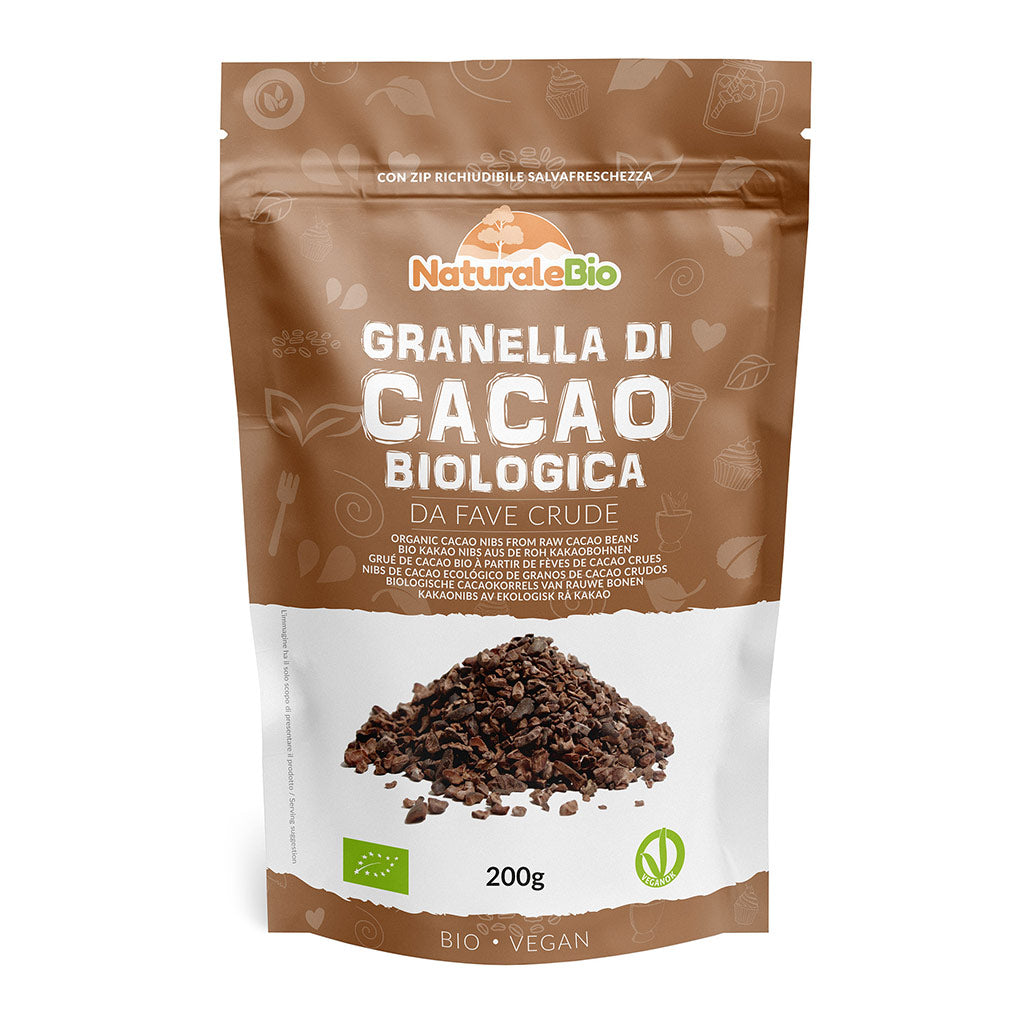
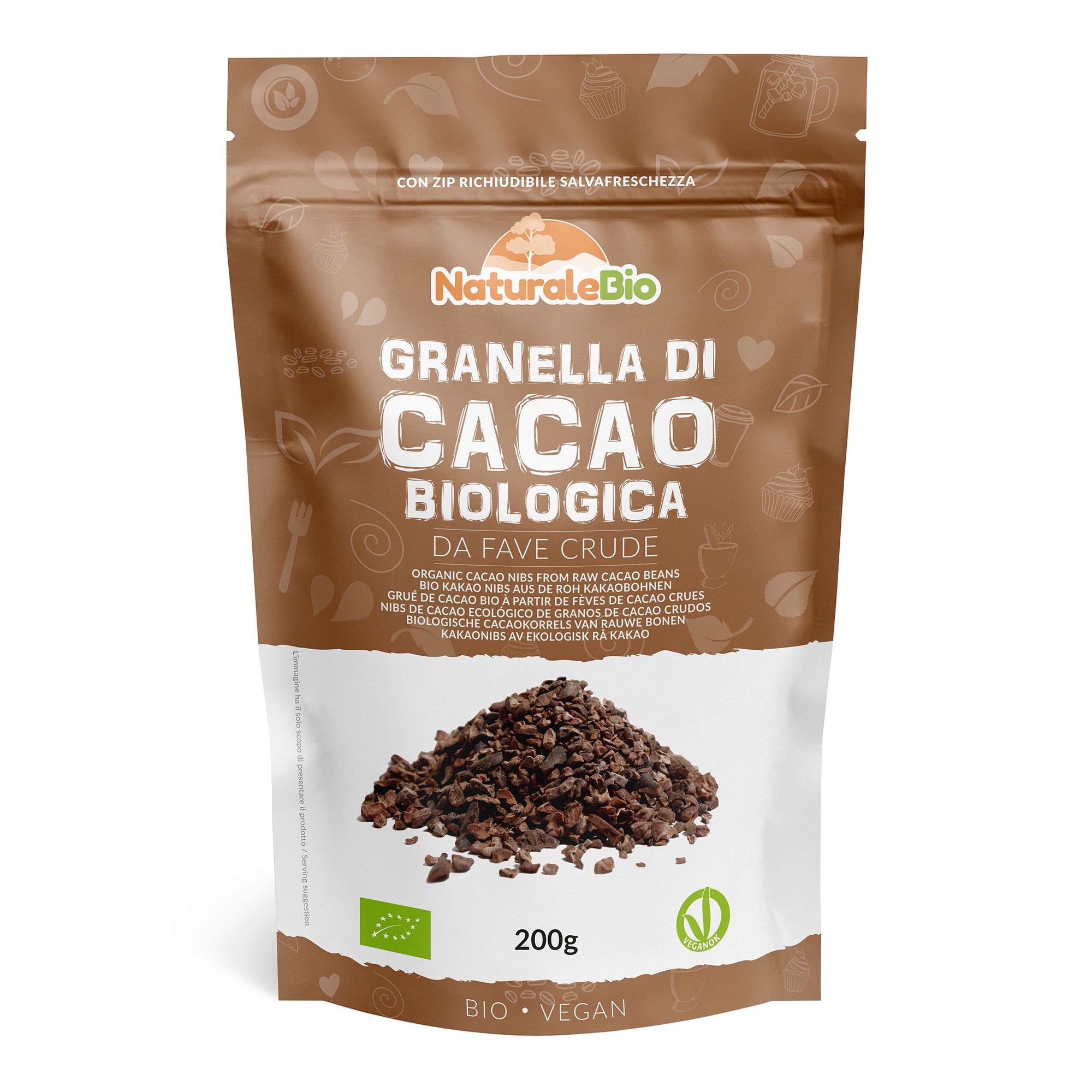
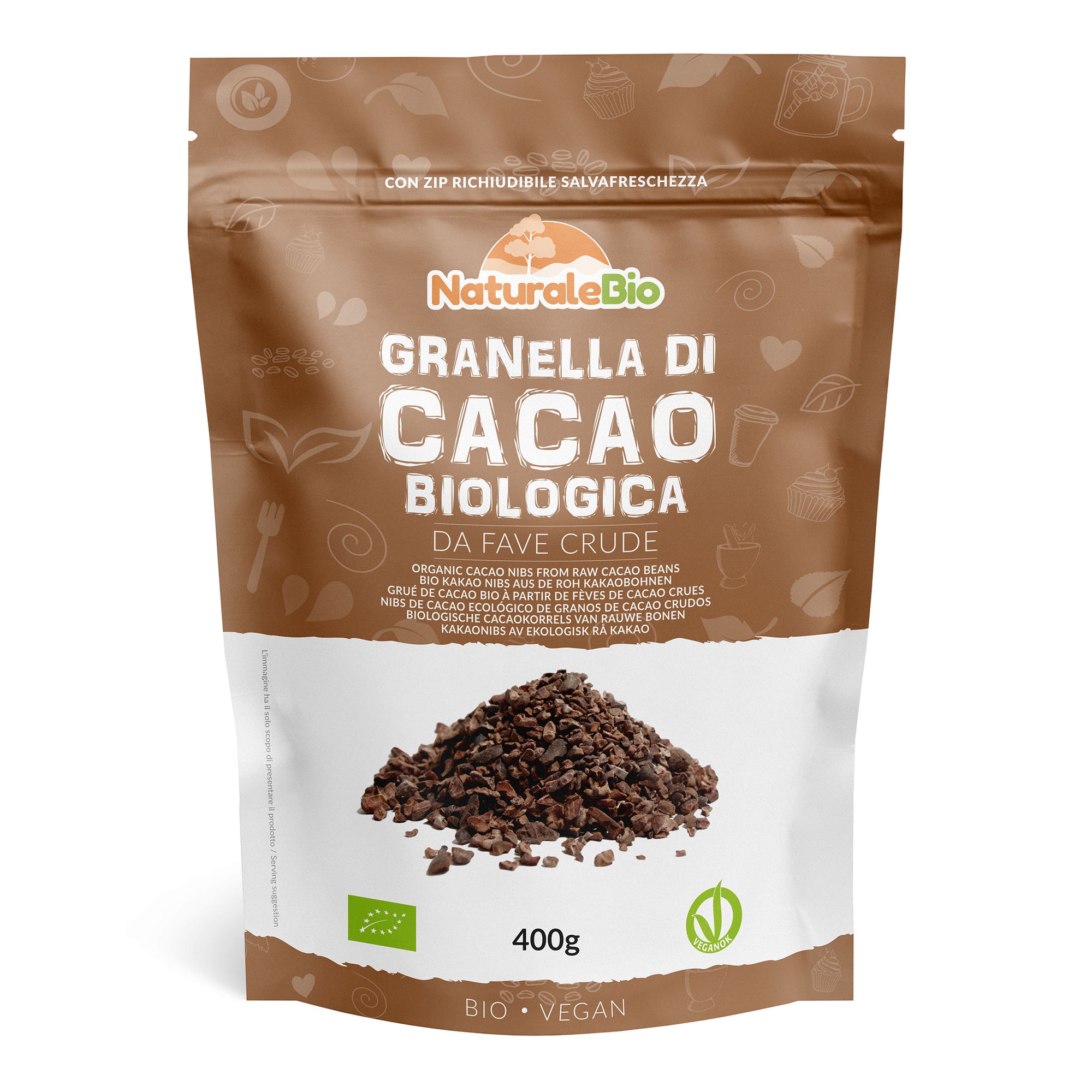
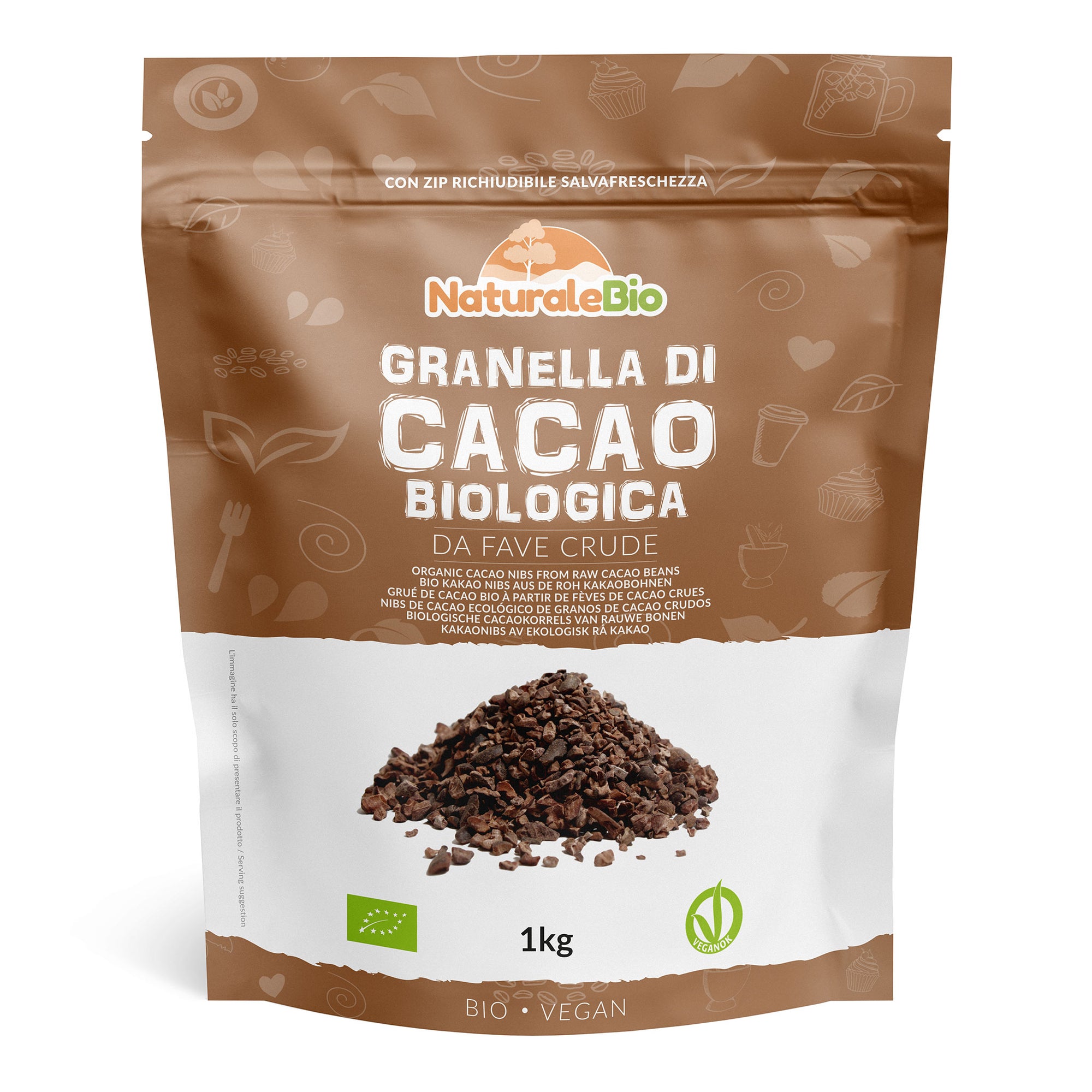
0 comments